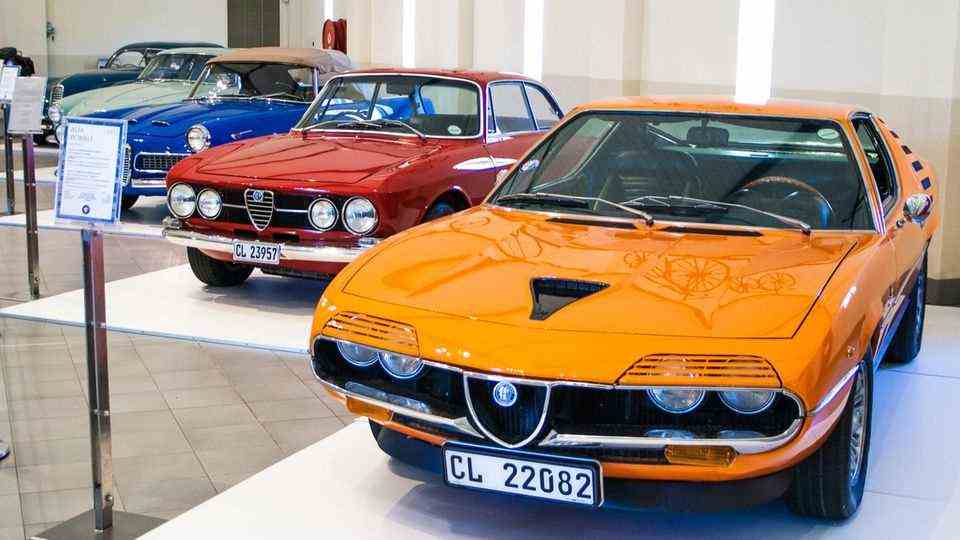20 years anniversary
Renault Vel Satis – France’s last and most absurd luxury car
The Vel Satis is still noticeable today
© pr
In the Vel Satis, the genius of French automobile construction was to flash once again. Ultimately, the daring model only convinced a few customers.
Ingenious, headstrong but technically prone – French cars had this reputation for a long time. Twenty years ago the Grande Nation made its last attempt to produce spectacular cars in which the French way of life could be recognized. The Renault Vel Satis and the almost simultaneously presented Avantime were one thing above all: brave. Most found the polarizing design incomprehensible, but of course fans say it differently. Certainly Vel Satis and Avantime did not, like the DS, anticipate the look of the next decade.
Style break in the upper class
Wild edges and bold cuts – the body of the Vel Satis is unique to this day. Nothing reminded her of the international competition in the upper class. The large and especially high passenger cell ensures a pleasant atmosphere in the interior thanks to the 2.84 meter long wheelbase, and the amount of space is still impressive today. The engines, on the other hand, were mass-produced. Certainly good enough for a company car, but not enough for the luxury class. Hardly anyone liked the short stub tail either.
The only reason to love the 4.86 meter long Renault Vel Satis today, as then, is the luxurious and cozy interior. The driver cannot expect cornering in his lounging chair at the front, but a lot of comfort. The Vel Satis is not a big hit – more of a sedan chair, without any sporting ambitions. In addition to the crumple-soft armchairs, there is plenty of space, three-zone automatic air conditioning, a navigation system, heated leather seats and keyless entry with a chip card, which was by no means a matter of course when the vehicle premiered at the Geneva Motor Show in March 2001. The direct and smooth steering is typically French and the development effort for the patented Trigon rear axle for maximum travel comfort is great. Unfortunately, things are not as great in the back as on the armchairs in the first row. Apart from a few specially individualized luxury models, there was no single seat system in the rear and no seat adjustment or heating. In the front, the occupants looked not only at an expansive cockpit with loveless round clocks, digital display and navigation screen, but also at chic wooden paneling and a wide center console, on which the operating satellite for navigation, on-board computer or sound system was ergonomically far behind.
Little response from customers
As early as 1998, the Vel Satis concept as a coupé with the same spectacular proportions had drawn attention to the later luxury sedan. The customer of the later series model had the choice between various gasoline and diesel engines between 139 and 241 hp. The diesel engines, which were available with 2.0, 2.2 and 3.0 liters, were particularly popular. The two four-cylinder engines with 139, 150 and 173 hp were hardly more sluggish than the three-liter V6 diesel with a power of 177/181 hp. The front-wheel drive had a maximum torque of 400 Nm and managed 212 km / h. The standard consumption was 8.7 liters of diesel per 100 kilometers. With the gasoline engine, Francophile customers could choose between a 170 hp four-cylinder or a significantly more befitting V6 gasoline engine with 241 hp, which was linked to a five-speed automatic transmission, while the 3.0 dCi already had six gear stages. Between the beginning of 2011 and the end of 2009, just 61,822 vehicles of the French luxury sedan were sold. Then Renault swore by the upper class.
If you want to drive a Renault Vel Satis, you have to search a long time. Only in the home market of France can you find a certain selection. And if you want a Vel Satis, you can’t avoid the top version with the 3.5 liter V6 engine. The car becomes round in the luxury equipment Initiale. If you find one, the bizarre Frenchman is at least cheap. Well-maintained vehicles with a complete package and less than 125,000 kilometers cost barely 5,000 euros. The most expensive model in Germany currently costs less than 10,000 euros. However, the Renault Vel Satis always struggles with electrical and electronic problems. Know that before you get one.



